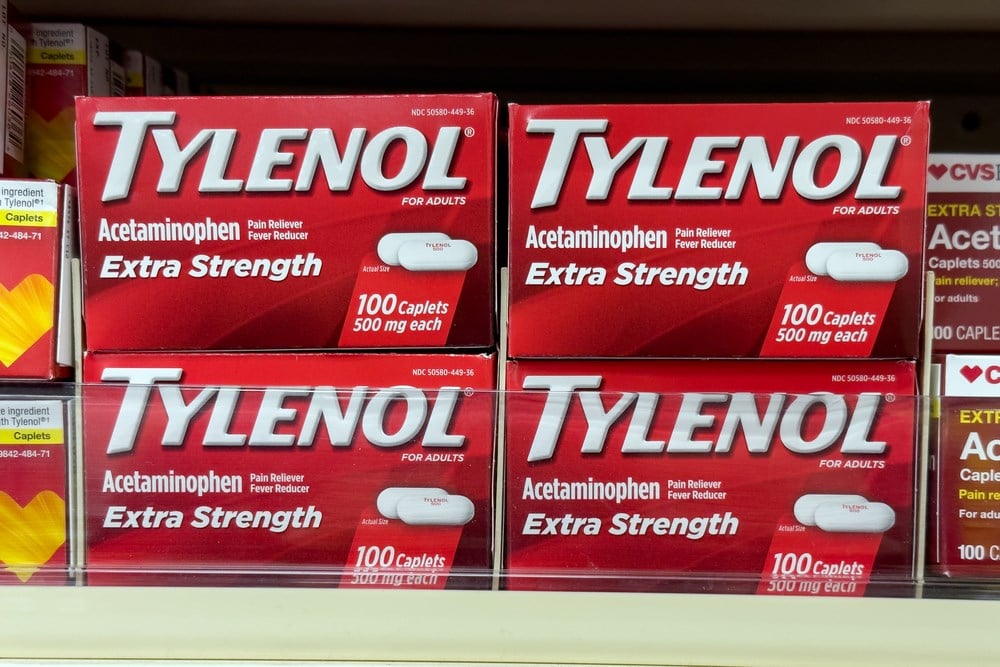
You’re familiar with its products, including Tylenol, Neutrogena, Listerine and Johnson’s Baby Shampoo. Still, you may not be up to speed on Kenvue Inc. (NYSE: KVUE) and its status as a long-term dividend payer.
Kenvue is now a holding within the ProShares S&P 500 Dividend Aristocrats ETF (BATS: NOBL), which tracks the performance of the S&P 500 Dividend Aristocrats Index. Those are stocks that have boosted their dividends for the past 25 years.
Wait a minute. How could a company that went public in May have a long history of dividend payments?
Kenvue was spun out of Johnson & Johnson (NYSE: JNJ), which wanted to focus on its pharmaceutical and medical device businesses.
Newly Crowned Royalty
S&P Global Indices added Kenvue to the S&P High Yield Dividend Aristocrats Index on August 25.
The addition of Kenvue, it said, was the result of Johnson & Johnson offering to exchange the shares of Kenvue it held for shares of Johnson & Johnson in what’s called a split-off exchange. Johnson & Johnson and Kenvue both remain in the index.
You can find Johnson & Johnson on MarketBeat’s Dividend Aristocrats stock list.
The index is considering the combined dividends of both companies when compiling the index.
So that’s a pretty complex transaction, but it’s the shorthand explanation of how a company that’s been public for four months is considered a dividend aristocrat.
So given that backstory, let’s examine the attributes of Kenvue.
Stock With Good Pedigree
With its pedigree of being a Johnson & Johnson spinoff, as well as a portfolio of top-selling brands, Kenvue had revenue of around $15 billion in 2022.
MarketBeat’s Kenvue dividend data shows you the yield is 3.57%. Kenvue is trading for 17 times the projected forward earnings.
Shares have trended lower since the IPO, declining by 9.30%.
Investors are likely letting the stock find its footing as a standalone public company. This year, Wall Street estimates that Kenvue will earn $1.30 per share, a year-over-year decline of 4%. The company is expected to earn $1.30 per share in 2024, as well.
Revenue Up 5%
Kenvue reported its first earnings as a public company on July 20, with revenue coming in at $4.01 billion, up 5% from the year-earlier quarter. Earnings were 30 cents a share, down 21%.
The company said organic growth increased by 7.7%. It cited demand in the pain care and cough, cold and flu product categories, as well as share gains in the sun care category, fueled by resulting from higher cold and flu incidences, and sequential share gains in sun care fueled by innovation and improved supply.
It issued guidance for the full year, expecting net sales growth to be in the range of 4.5% to 5.5%.
Potential Headwinds
Based on current spot rates, it expects foreign exchange to be a headwind of about one percentage point to net sales growth.
Another headwind is the remaining legal wrangling connected to Johnson & Johnson’s talcum-powder class-action suits.
According to Kenvue’s Securities and Exchange Commission registration statement, “Johnson & Johnson will indemnify us for certain liabilities, including talc-related liabilities for products sold in the United States and Canada, but such indemnity may not be sufficient to protect us against the full amount of such liabilities or Johnson & Johnson may be unable to satisfy its indemnification obligations.”
That’s some legal speak to address any potential risks, but essentially, Kenvue shouldn’t face any significant hurdles due to those legal issues.
Potential Tailwinds
Watch for a couple of possibly good developments with Kenvue. First, as it’s already considered a dividend aristocrat, Kenvue’s board may opt to raise the dividend if the company remains profitable, as it should.
Second, as the company logs more time on the public markets, expect investors to swoop in and begin sending the stock’s price higher.
Kenvue is well positioned as a newly public company, as its brands are already well-known big sellers. In addition, not many new companies start life as dividend payers. Kenvue’s dividend is an attractive feature for investors who want income to offset stock-price declines.